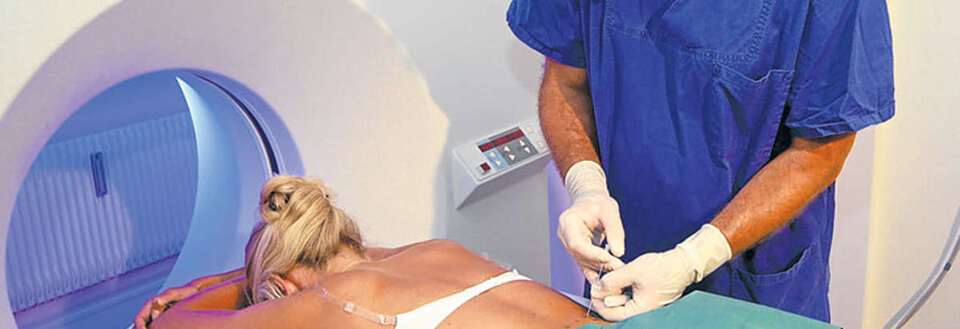Denervation at OrthoCenter Munich
Denervation
As a denervation is referred to a complete or partial interruption of nerve pathways between the institution and the brain. The objectives of denervation are many. In our office we use this minimally invasive pain management procedures to combat chronic back pain. Most commonly affected are the lumbar spine and the sacrum and iliac joint, many also under the name “ISG” or “sacroiliac” known.
Your advantages at OrthoCenter Munich
- Orthopedic treatment focus on spinetherapy
- Wide range of conservative and operative procedures
- Gentle procedures in focus: Dr. Riedel specializes in gentle pain therapy. He was head physician in various pain clinics for over 20 years
- Joints and surgical expert: Prof. Dr. Lill specializes in the treatment of joints. He has years of experience in the field of minimally invasiveand arthroscopic ops.
- Cooperation with clinics and research institutes worldwide
- Renowned private practice: the OrthoCenter is internationally known and repeatedly welcomes patients from abroad who come to Munich for treatment
Different methods of denervation in Munich
Cause of the complaints are mostly overload reactions of the small vertebral joints (facet joints) or the increased wear that lead to premature osteoarthritis with an inflammatory reaction accompanying.
There are different methods of denervation , we focus on the application of heat. Via radio waves, heat is generated (80-90 ° C for 60-90 seconds), the flow to the nerves, and thereby interrupt the pain-transmitting nerves. This process is called “radio frequency neurotomy” or as “percutaneous radiofrequency denervation”
After local anesthesia, a thin needle is placed at the affected vertebral joint or the nerve to be treated with the aid of fluoroscopy unit. Subsequently, a temperature probe on the opposite hollow needle is introduced and generates heat. About a simultaneous tissue cooling in the electrode region higher power is made possible, thus achieving a high volume tissue treatment with thermal cut through the nerves.
After the injection, the patients remain ambulatory for several hours under observation in our practice areas and can then go back home. This procedure can be done on request under stationary conditions depends certainly on the extent of the planned procedure and the respective health status of the patient.










